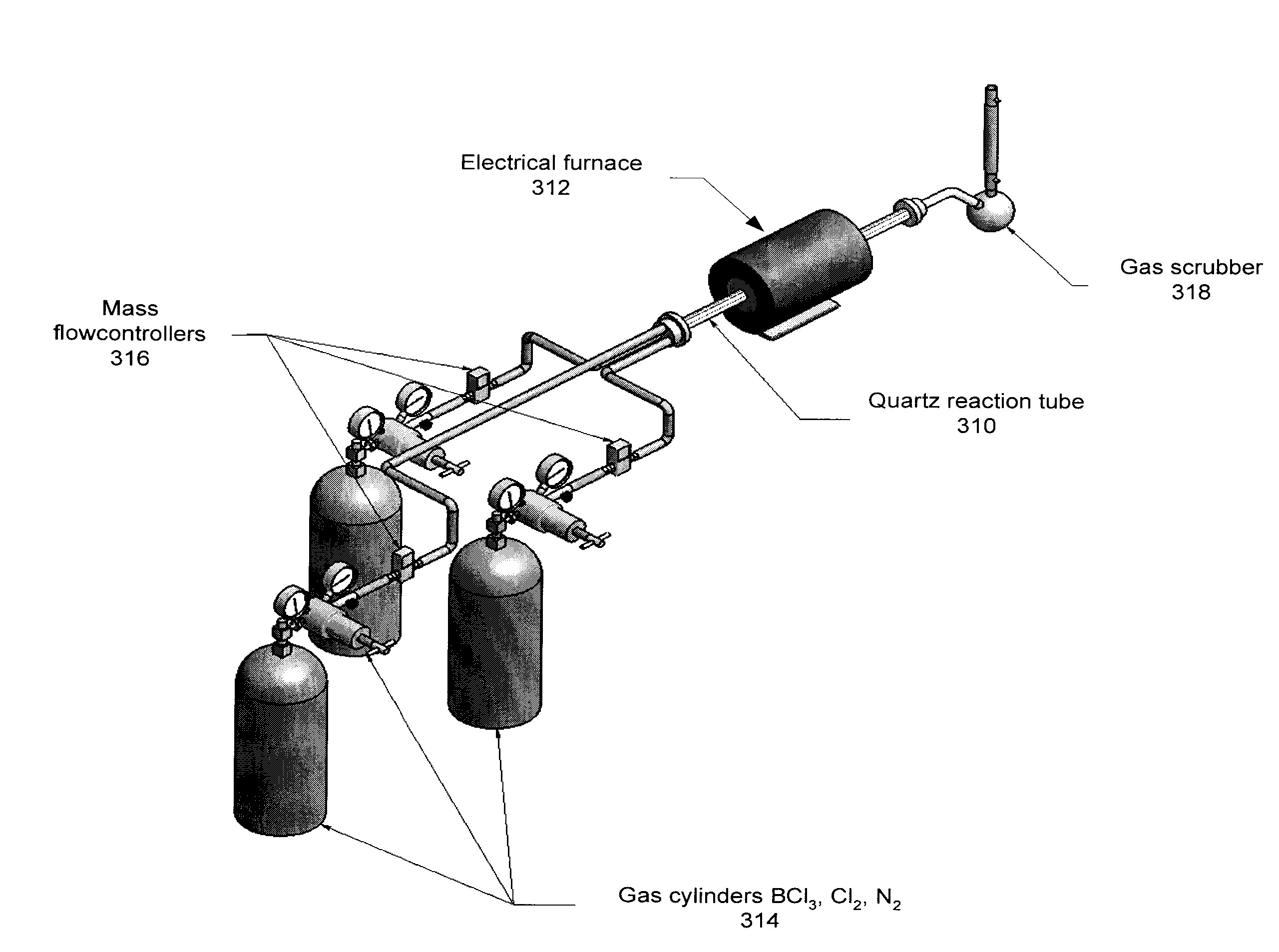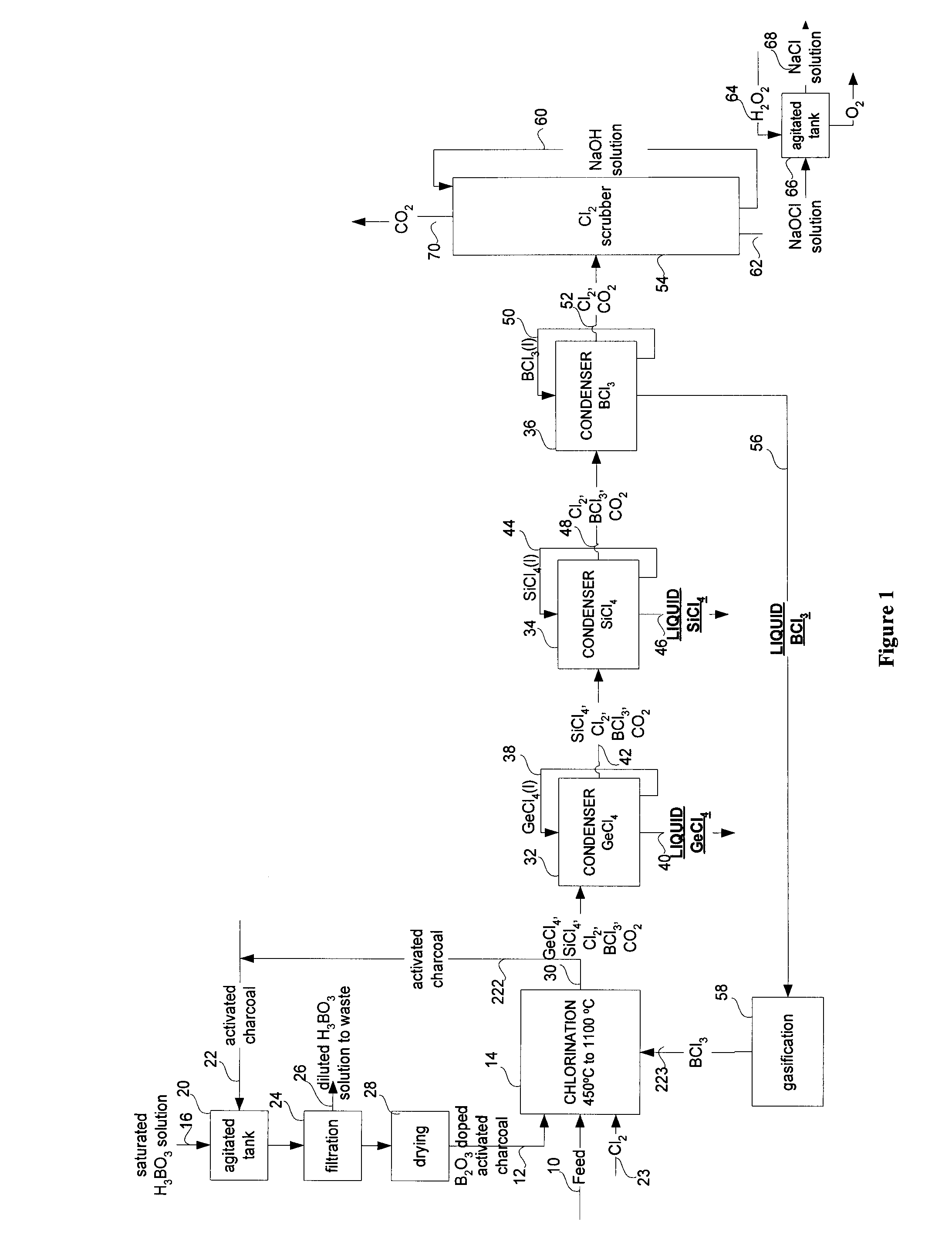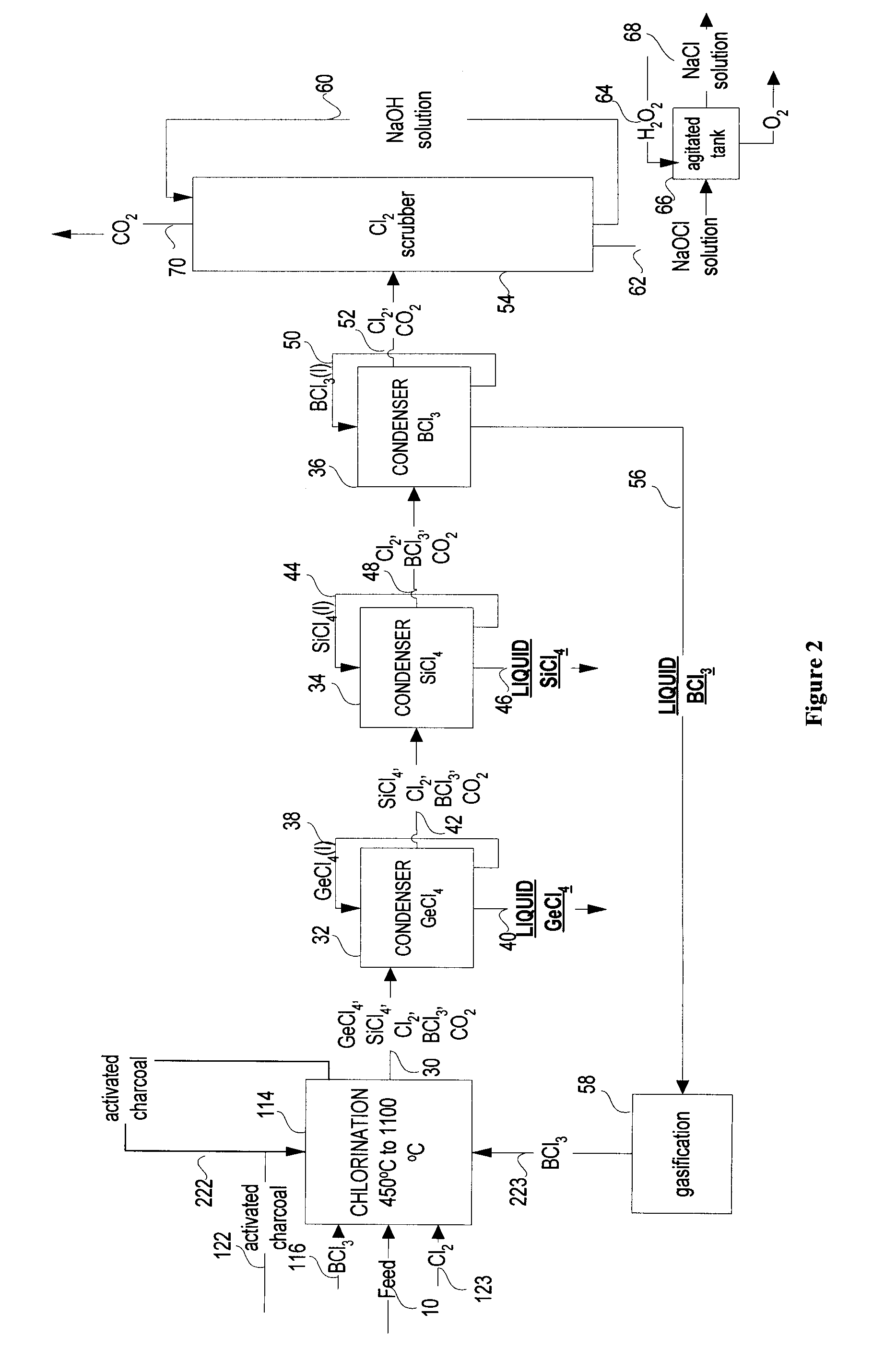Gecl4 and/or sicl4 recovery process from optical fibers or glassy residues and process for producing sicl4 from sio2 rich materials
a recovery process and optical fiber technology, applied in the field of process for recovering germanium and silicium from optical fibers, can solve the problems of high cost of chloride used in dechlorination reactions and large loss of manufacturing optical fibers
- Summary
- Abstract
- Description
- Claims
- Application Information
AI Technical Summary
Benefits of technology
Problems solved by technology
Method used
Image
Examples
example 1
Identification of the Main Parameters Influencing the Simultaneous Conversion of GeO2 and SiO2 into GeCl4 and SiCl4
[0145]In order to minimize the number of experiments to identify the main parameters controlling the conversion of GeO2 and SiO2 into GeCl4 and SiCl4 an orthogonal matrix of the Taguchi type was constructed using four parameters: a) reaction time, b) reaction temperature, c) addition of boron, d) type of reducer. The reaction time was varied from 20 to 90 minutes. The temperature was varied from 700° C. to 1200° C. The solid reducers tested were metallurgical coke and gaseous CO. Boron was added directly as H3BO3. The parameters tested and the conversion rates obtained, according to the pre-defined orthogonal matrix, are reported at Table 1 under experiments No. 1-10. For these experiments only the conversion factor for SiO2 was considered has being of significance for the variance analysis since the analytical errors on GeO2 conversion rates were superior to those for...
example 2
Optimization of BCl3 Formation and its Effects on the Conversion Rates of GeO2 and SiO2
[0149]In order to maximize contact between a given boron compound and the carbonaceous solid reducer, a solution saturated with boric acid was placed in a beaker with activated charcoal. The pulp was then agitated and filtered. The solid residue obtained was dried over night in an oven at 150° C. The resulting activated charcoal doped with boron was used for the experiments.
[0150]It is known that BCl3 react vigorously with water, in fact with any compounds containing oxygen as explained above. To minimize side reactions of BCl3 with water an addition to the experimental procedure already described was effected. The reagent, placed in the furnace, was dried at 500° C. for 3 hours under a nitrogen atmosphere before being exposed to the chlorine gas. The experimental parameters and the results for these experiments are reported in Table 1 under experiments No. 11 and 12. For these two experiments, t...
example 3
Effect of a > on the Conversion Rates of GeO2 and SiO2
[0151]Experiments 1 to 12 were carried inside a static horizontal reactor. It was not possible to revise FIG. 7 experimental set up into a dynamic arrangement without introducing major modifications to the system. However, in experiment 13, the experimental procedure was adapted in order to simulate one or several partial mixing episodes.
[0152]After a given reaction time, the chlorine flow was turned off and N2 was flowed into the quartz reaction tube. The furnace temperature was lowered from the predetermined experimental temperature to 350° C. The beaker containing the powder was withdrawn from the furnace still hot using a glass rod. The powder was then mixed with a glass spoon for few minutes under a fume hood. The beaker containing the powder was then replaced in the furnace, the temperature was adjusted to the predetermined experimental temperature and a current of N2 was maintained into the reaction tube. When the predete...
PUM
| Property | Measurement | Unit |
|---|---|---|
| Temperature | aaaaa | aaaaa |
| Temperature | aaaaa | aaaaa |
| Temperature | aaaaa | aaaaa |
Abstract
Description
Claims
Application Information
 Login to View More
Login to View More - R&D
- Intellectual Property
- Life Sciences
- Materials
- Tech Scout
- Unparalleled Data Quality
- Higher Quality Content
- 60% Fewer Hallucinations
Browse by: Latest US Patents, China's latest patents, Technical Efficacy Thesaurus, Application Domain, Technology Topic, Popular Technical Reports.
© 2025 PatSnap. All rights reserved.Legal|Privacy policy|Modern Slavery Act Transparency Statement|Sitemap|About US| Contact US: help@patsnap.com



